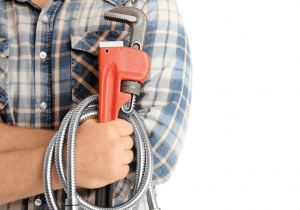Calibrating an adjustable pipe wrench involves several key steps to ensure it works efficiently and safely. Regular cleaning and inspection help identify any wear or damage affecting the wrench’s performance.
Aligning and adjusting the jaws ensures a secure grip, while lubrication keeps the wrench operating smoothly. Regular calibration not only extends the tool’s lifespan but also enhances safety and efficiency.
Adjustable pipe wrenches are important tools for many plumbing tasks. However, their calibration can become inaccurate over time, leading to inefficient work and potential damage.
In this guide, we will tackle the importance of regular calibration, signs that indicate its need, and the detailed steps for the calibration process. By following these guidelines, you can keep your pipe wrench in top condition.

How to Properly Calibrate Adjustable Pipe Wrench
Calibrating an adjustable pipe wrench ensures it works efficiently and safely. Here are three detailed steps to help you keep your wrench in top condition:
Step 1: Thorough Cleaning and Inspection
Clean the Wrench: Start by thoroughly cleaning your pipe wrench. Use a cloth to wipe off any dirt, grease, or grime. For stubborn spots, use a small brush or a mild cleaning solution. Cleaning the wrench helps you see potential issues and ensures a smooth calibration process.
Inspect for Damage: Once the wrench is clean, carefully inspect it for signs of wear and tear. Look for rounded jaws, bent handles, loose parts, or other damage. Identifying these problems early on allows you to address them before they affect the calibration. If you find significant damage, consider repairing or replacing the wrench.
Step 2: Align and Adjust the Jaws
Check Jaw Alignment: Proper jaw alignment is important for a secure grip. Misaligned jaws can cause the wrench to slip and lead to potential damage or injury. Use a calibration gauge to measure the position of the jaws. They should be parallel and evenly spaced.
Adjust the Jaws: To adjust the jaws, use the adjustment knurl to move them into the correct position. Test the grip on a pipe to ensure the jaws engage firmly without slipping. If the grip feels loose or uneven, make further adjustments until the wrench holds the pipe securely.
Step 3: Lubricate and Test
Lubricate Moving Parts: Apply a small amount of high-quality lubricant to the moving parts of the wrench, such as the adjustment knurl and pivot points. Lubrication reduces friction, ensures smooth operation, and prevents wear and tear. However, be careful not to over-lubricate, as excess oil can attract dust and debris, potentially causing more harm than good.
Test the Wrench: After lubrication, test the wrench on a pipe. Ensure it grips securely without slipping. If it doesn’t feel right, repeat the calibration steps until you achieve the desired result. Testing the wrench helps confirm that the calibration was successful and that the tool is ready for use.
Record the Calibration: Finally, keep a log of your calibration activities. Record the date, any adjustments made, and observations about the wrench’s condition. This practice is especially useful for those seeking reliable tips for calibrating pipe wrenches and maintaining their tools effectively.
By following these three detailed steps, you can maintain your adjustable pipe wrench in optimal condition, ensuring it performs efficiently and safely.
Signs Your Pipe Wrench Needs Calibration
Knowing when to calibrate your adjustable pipe wrench is key to maintaining its effectiveness. Here are some signs that indicate your wrench needs calibration:
Slippage During Use
If your wrench frequently slips off the pipe, it’s a clear sign that it needs calibration. Slippage indicates that the jaws are not gripping the pipe securely.
Visible Wear and Tear
Inspect your wrench regularly for visible signs of wear, such as rounded jaws, loose parts, or bent handles. These issues can affect the wrench’s performance and signal the need for calibration.
Inconsistent Grip
If you notice that the wrench’s grip is not as strong as it used to be, or it feels uneven, it’s time for a calibration check.
Difficulty in Adjusting
If adjusting the wrench has become more difficult or the adjustment mechanism feels loose, it’s a sign that the wrench needs calibration.
After Heavy Use
After completing a particularly demanding job or series of tasks, it’s wise to calibrate your wrench. Intensive use can affect its alignment and gripping strength.
Why Calibrate Adjustable Pipe Wrenches
Calibrating adjustable pipe wrenches is important for several reasons. First, it ensures that the wrench can grip pipes securely, reducing the risk of slippage and damage. Proper calibration is also important in strap wrench calibration, where maintaining the correct tension prevents slippage on smooth or irregularly shaped surfaces.
Second, a properly calibrated wrench applies the right amount of force, preventing over- or under-tightening. This is also particularly necessary when adjusting offset pipe wrenches, which are often used in tight or awkward spaces and require precise force application to avoid damage.
Additionally, calibration extends the life of your tool by maintaining its precision and effectiveness, saving you money in the long run. Regular calibration also enhances safety by minimizing the chances of accidents caused by a faulty grip or misalignment.
Overall, taking the time to calibrate your adjustable pipe wrench ensures better performance, increased safety, and a longer tool lifespan.
